The desire to improve himself to the extreme has pushed Novak Djokovic beyond his limits to become the all-time tennis record holder.
"He's crazy," coach Goran Ivanisevic said of Novak Djokovic, shaking his head in an interview midway through the 2023 season - one of Djokovic's peak seasons. According to Ivanisevic, even with the title in hand, Djokovic still lamented his own weaknesses.
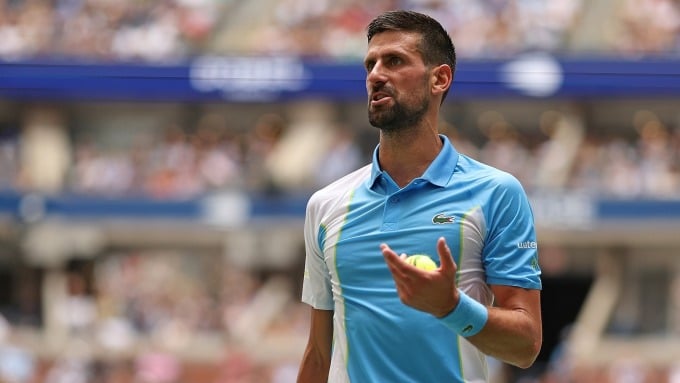
Djokovic in a match at the 2023 US Open, where he extended his Grand Slam record to 24. Photo: Reuters
Ivanisevic has seen this attitude from Djokovic more and more often, especially in the last four years. The Serb often arrives at practice in a bad mood, convinced that the match was a disaster, that he needs to improve on everything. Serve, attack, backhand – one of the best backhands in history – are all jumbled up in Djokovic’s mind.
Djokovic hardly shows any recognition for himself, despite owning a record of 24 Grand Slams, 40 Masters 1000s, 34 other major and minor titles after more than 1,000 wins. The only thought Nole shows Ivanisevic is how he needs to improve himself so as not to be "cooked" by his opponents.
Great players are always hungry to improve, and Djokovic is no exception. But the extreme desire Djokovic has and the method to improve is rare. Replicating peak performance, season after season on all three surfaces, is a huge challenge for any legend.
2015 was the season Djokovic played some of the best tennis he has ever seen. It’s the year Djokovic often cites when asked about his best. But since then, Djokovic has seemingly played at the same or better level. He’s reached all four Grand Slam finals in 2023, winning three of them. Had Carlos Alcaraz not been brilliant in the final games of the fifth set, Djokovic would have taken Wimbledon by storm to create his greatest season yet.
As rivals fall behind in the Grand Slam race, with closest challenger Rafa Nadal two titles behind, the only one left for Djokovic to compare himself to is himself.
Djokovic is no longer playing like he did in 2015, the season he swept the tournament with 11 titles in 15 finals, defeating three other "Big Four" players by a combined score of 15-4, including 4-0 against Nadal. The 36-year-old Djokovic is attacking more, defending less, to shorten the time he spends on the court. But one thing that hasn't changed is that the important points still often belong to him.
Djokovic's formula for the season has been a smooth start at the Australian Open, which has been considered a "fertile ground" that has seen him unbeaten for half a decade. Nole won his 10th title last year - nearly double the record of six titles set by home legend Roy Emerson and Roger Federer years ago.
Djokovic describes Australia as his happy place. Not even a torn muscle could stop Nole from winning the 2021 title. "The more you win in one place, the more confident you are for the next time you appear there," Djokovic said of the Australian Open during the United Cup last week.
As the tennis courts and balls get faster and stronger each season, Djokovic’s aging body is a major obstacle. He admits he doesn’t move as well as he used to, making it harder to defend. He has to take the initiative early, transition quickly and finish as hard as possible.
High-speed tracking devices meticulously analyzed by British company Tennis Viz and Tennis Data Innovations - a joint venture between the ATP Tour and ATP Media - demonstrate that Djokovic has gone from a defensive counter-attacker to someone who looks to attack at every possible opportunity.
The serve was the first thing Djokovic had to improve as he pursued an energy-saving, attacking style of play. At his peak in 2015, he was a mediocre server, averaging 185 km/h. Since working with coach Ivanisevic, a serving specialist, Djokovic has taken his serve to new heights. From 2019 to 2023, his serve averaged 193 km/h.
Djokovic’s improvement has not come from better racket technology or lighter balls. The average serve speed on the ATP Tour has barely increased over the years, from 186 to 188 km/h. This means that while his opponents have stagnated or improved very little, Djokovic has leaped ahead of himself and the average.
Djokovic’s serve speed has improved, as has his quality. Tennis Data Innovations data shows that Nole’s first serve in 2023 is 5cm closer to the line than in 2015, and 8cm closer than the ATP average. This is important on any court surface, but it’s especially noticeable on the fast-swinging hard court at Melbourne Park. A serve on this court will almost immediately send the ball out of reach.
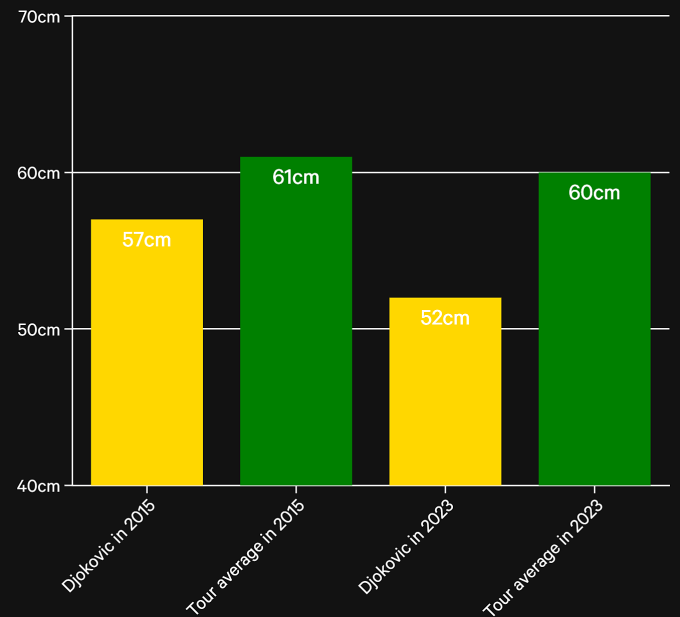
Average distance from ball landing to line, in serves of Djokovic (yellow) and the rest of the ATP Tour (blue) in 2015 and 2023. Photo: TennisViz
Djokovic has also improved his return of serve, despite having long been a specialist in returning the ball. Statistics show that Djokovic successfully returns second serves to the opponent's backhand 47% of the time in 2023, up from 39% in 2015. As a result, he puts himself in a better attacking position immediately after the return. Nole's conversion rate after taking the attacking position is the highest on the ATP Tour at 72.1%.
How does Djokovic score so consistently? A forehand that is about 4 km/h faster is one of the key factors. In 2015, Djokovic’s forehand averaged 120 km/h, but now it’s 124 km/h. He also plays the ball earlier than before, when the attack position is 60 cm closer to the court. This takes away a few seconds of recovery and preparation for his opponents, making their breathing more suffocating.
Being more aggressive on offense means Djokovic has less to defend, less to chase and less to swing. This certainly suits the near-40-year-old. It's a lot like Federer's play in his later years, but more solid, consistent and clever, because Djokovic has a better defensive foundation than the Swiss.
Djokovic’s opponents now have little choice: Attack before they are attacked. They must make Djokovic run more, play more defense, and wear down his stamina, as Djokovic did more than a decade ago against his most formidable opponents. Former world number one Andy Roddick once lamented: “First Djokovic takes your legs, then your head.” Learning from Djokovic to beat Djokovic is what today’s players need to stop the most powerful winning machine in history.
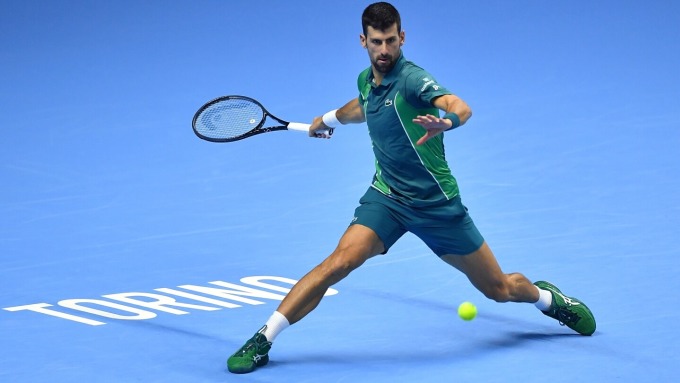
Djokovic saves the ball during a match at the ATP Finals, in Turin, Italy in November 2023. Photo: Reuters
"Winning more titles, breaking more records is what drives me every day. There's no secret about that," Djokovic said before the 2024 season. He aims to win more Grand Slams, Davis Cups and unprecedented glory - Olympic gold. Nole enjoys extinguishing the ambitions of young talents. Two Next Gen generations have appeared but have not yet managed to make Djokovic give up the throne.
"If you want me to leave the ATP Tour, the only way is to kick my ass," Djokovic challenged his juniors, while his father called on his son to retire after 2024 because he had won enough glory.
Young players can also look to this day, as Djokovic has withdrawn due to injury or other issues. Nole recently suffered a minor wrist injury in the build-up to the Australian Open. But last year, he won the Grand Slam with a serious hamstring injury that Ivanisevic described as a withdrawal any other player would have had. In 2021, Djokovic also won with a torn abdominal muscle in the third round.
"I know what I have to do to maintain my body in optimal condition," Djokovic said, adding that he still wants to play tennis despite having to travel away from his family for weeks, even months.
The way Djokovic never gives up, but always finds solutions to adapt, improve his game and constantly develop himself is perhaps a lesson that goes beyond tennis.
Vy Anh
Source link


![[Photo] General Secretary To Lam, Secretary of the Central Military Commission attends the 12th Party Congress of the Army](https://vphoto.vietnam.vn/thumb/1200x675/vietnam/resource/IMAGE/2025/9/30/9b63aaa37ddb472ead84e3870a8ae825)
![[Photo] General Secretary To Lam receives US Ambassador to Vietnam Marc Knapper](https://vphoto.vietnam.vn/thumb/1200x675/vietnam/resource/IMAGE/2025/9/29/c8fd0761aa184da7814aee57d87c49b3)
![[Photo] General Secretary To Lam attends the ceremony to celebrate the 80th anniversary of the post and telecommunications sector and the 66th anniversary of the science and technology sector.](https://vphoto.vietnam.vn/thumb/1200x675/vietnam/resource/IMAGE/2025/9/29/8e86b39b8fe44121a2b14a031f4cef46)


![[Photo] Many streets in Hanoi were flooded due to the effects of storm Bualoi](https://vphoto.vietnam.vn/thumb/1200x675/vietnam/resource/IMAGE/2025/9/29/18b658aa0fa2495c927ade4bbe0096df)
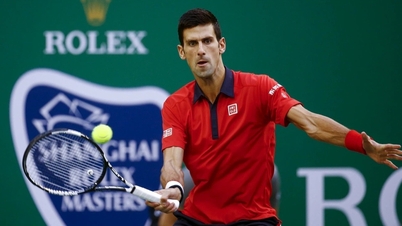


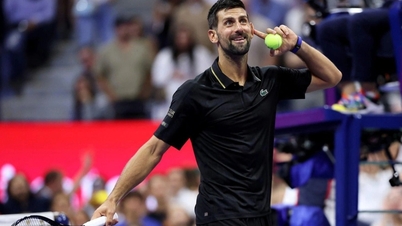

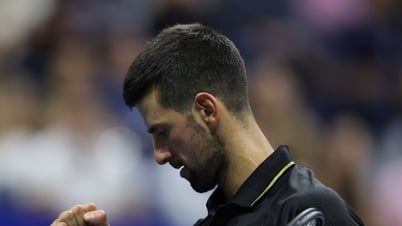

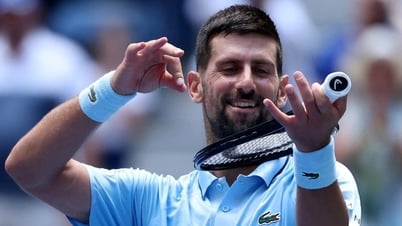
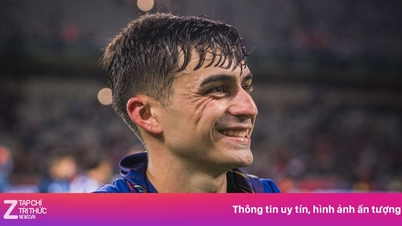

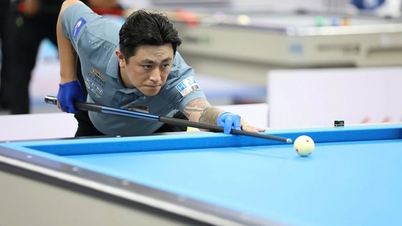

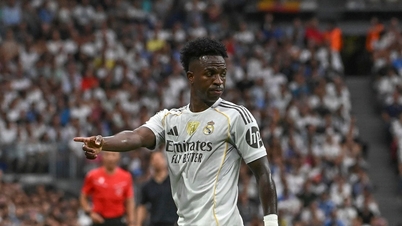


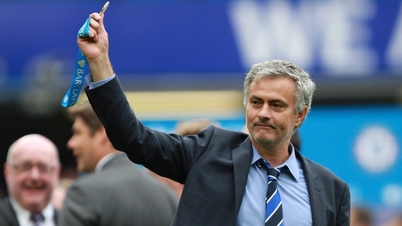











![[Photo] National Assembly Chairman Tran Thanh Man chairs the 8th Conference of full-time National Assembly deputies](https://vphoto.vietnam.vn/thumb/1200x675/vietnam/resource/IMAGE/2025/9/29/2c21459bc38d44ffaacd679ab9a0477c)

















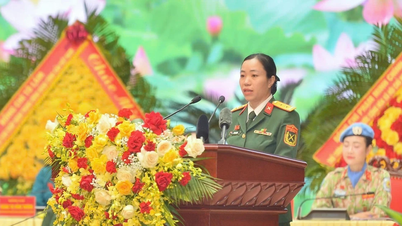















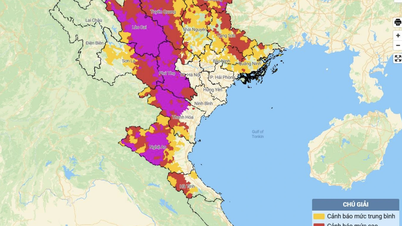
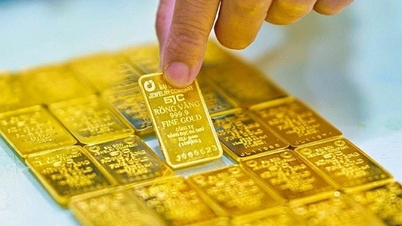




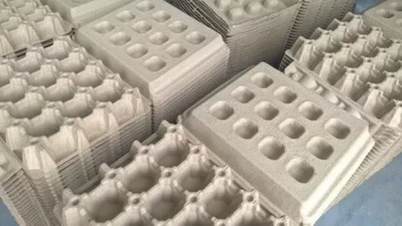



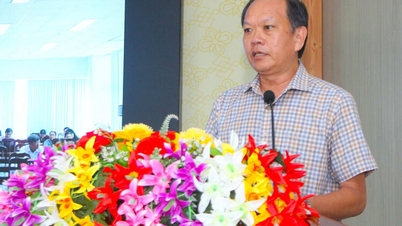

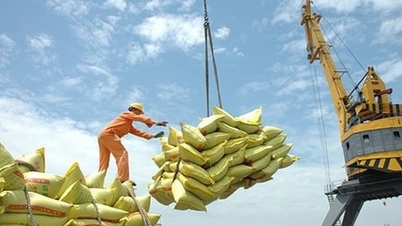

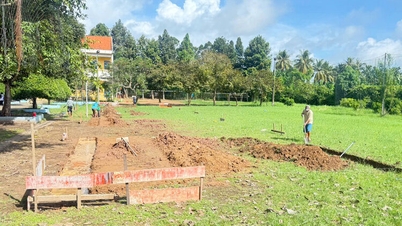

















Comment (0)